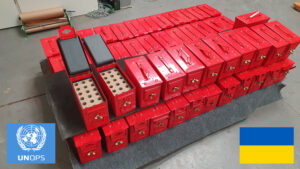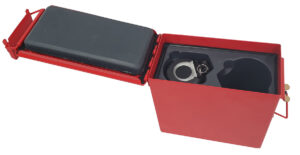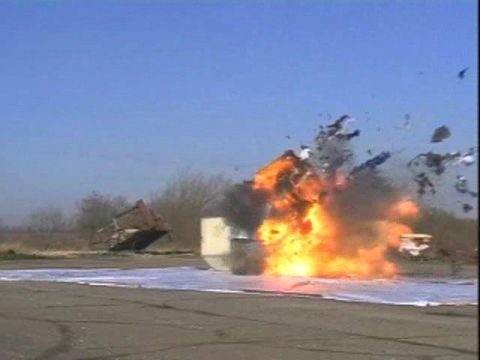

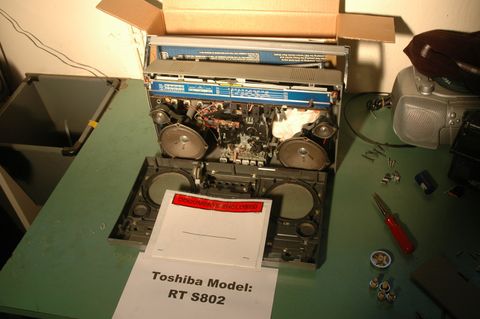
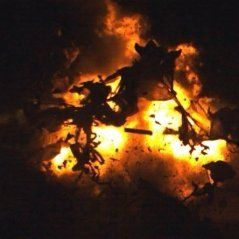
At the beginning of 2007 SJH Projects worked with Dr John Wyatt of the SDS Group to run a series of tests to investigate the validity of the some of the forensic evidence used to convict Abdelbaset Ali Mohmed Al Megrahi of the bombing of Pan Am 103 over Lockerbie. Dr Wyatt spoke of this work for the first time on the BBC national news programme Newsnight in January 2009.
Whether the outcome of the explosives tests would back or conflict with the aims of his legal appeal team was not our concern. Our aim was to perform a logical series of explosive events, starting small and building up to a complete baggage container.
All except for the baggage container test were performed in a large blast chamber, which had been thoroughly cleaned beforehand. After each test, the debris was collected by a team of forensic specialists for later examination. The outcome of the forensic examination was not known to the test team so that it did influence or steer the trials plan in any way.
The first tests were performed with bare, unpackaged radios of various models. We then moved onto radios of a similar type to that used for the Pan Am 103 bombing in the same form of packaging.
The next step was to investigate the positioning of the radio in single suitcases. For visibility and to avoid the influence of adjacent hard surfaces the suitcases were suspended. The resulting pressure release was recorded with specialist instrumentation.
Single suitcases having been examined, we then moved to small stacks of suitcases to assess the effect of adjacent bags of different forms and relative orientations. In all of these tests our ‘prime’ suitcase had been carefully prepared with the contents as specified during the trial proceedings. Each of our ‘prime’ suitcases was loaded in exactly the same way to minimise variation wherever possible.
After multiple days of testing we were the able to move onto full-scale a baggage container test. Here again our ‘prime’ suitcase was carefully prepared and positioned to match the location that has become established as fact. The location of each surrounding bag was recorded as it was loaded. The baggage container was placed on a large grid so that debris could be mapped on landing. Another container was placed back to back with the live one. No aircraft fuselage was used, as the aim was not to investigate what happened to the aircraft but to establish what is most likely to have happened to the circuitry and components of the radio.
The conclusions of Dr Wyatt, as presented on Newsnight, is that in his opinion it most unlikely and improbable that the key forensic evidence presented on behalf the prosecution would have survived the blast event.
